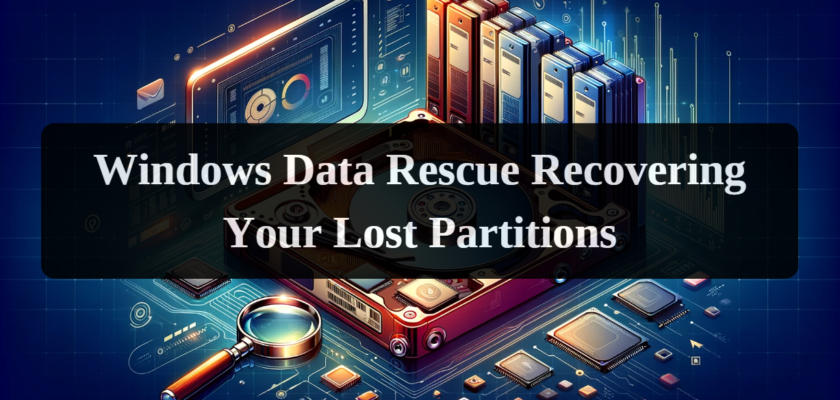Accidentally deleting a partition on a Windows computer can be a distressing experience, especially when it contains valuable data. However, the good news is that recovery is often possible. This guide will walk you through the steps to recover deleted partitions, choose the right recovery software, and prevent future data loss.
Understanding Partitions:
A partition is a distinct section of a hard drive. When Windows is installed, it typically creates a default partition, and users can create additional ones for organizational purposes. There are different types of partitions – primary, extended, and logical, each serving unique roles. Deleting a partition removes its reference but generally leaves the data intact until it’s overwritten.
The Recovery Process:
When a partition is deleted, its space is marked as available, but the data remains. Immediate action is crucial to prevent data overwrite. Avoid using the drive and follow these recovery steps.
Choosing Data Recovery Software:
Selecting the right software is critical. Consider these factors:
- Ease of Use: Look for user-friendly interfaces suitable for beginners.
- Compatibility: Ensure the software supports Windows.
- Recovery Success Rate: Research its effectiveness in recovering data from deleted partitions.
- Customer Support: Good support is invaluable in case of difficulties.
Instead of recommending a single product, we suggest comparing top-rated software like Recuva, EaseUS Data Recovery Wizard, and Stellar Data Recovery.
Step-by-Step Recovery Guide:
- Preparation: Do not install recovery software on the drive where the partition was deleted.
- Software Installation: Install your chosen recovery software on a different drive.
- Recovery Process: Launch the software, select the target drive, and start the scanning process.
- Data Restoration: Once the scan is complete, preview and select the files to recover. Save them to a different drive.
When to Use Professional Services:
If the software can’t recover your data or the drive is physically damaged, consider professional data recovery services. They’re more expensive but can handle complex scenarios.
Preventing Data Loss:
Regular backups are the best defense against data loss. Use local backups (external hard drives, USB drives) and cloud-based services. Cloudberry Backup is an example of a cloud service that provides automated backups. Balance your choice based on convenience, cost, and security needs.
Conclusion:
Recovering a deleted partition in Windows is often feasible with the right tools and approach. Act promptly, choose the appropriate software, and consider professional help if needed. Most importantly, regularly back up your data to avoid such predicaments.

